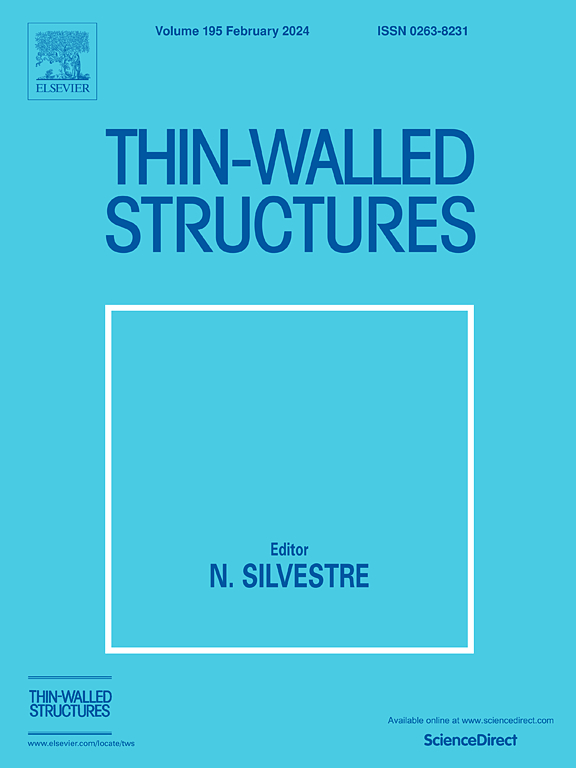Numerical simulation for microstructure control in wire arc additive manufacturing of thin-walled structures
IF 5.7
1区 工程技术
Q1 ENGINEERING, CIVIL
引用次数: 0
Abstract
The difference of cooling rates on the surface and the interior of thin-walled structures leads to significant differences of microstructures in additive manufacturing (AM). To reveal the microstructure control in wire arc additive manufacturing of thin-walled structures, a gas-heat coupling model with experimental validation is proposed. The computational accuracy can reach 96 % in prediction of temperatures and microstructures. Increasing the preheating or scanning speed leads to a higher probability of heterogeneous nucleation on the surface of thin-walled structures. When the pre-heating is increased from 550 K to 750 K, the proportion of equiaxed grains increases by 20.8 %. When the gas flow rate of super cooling is increased from 20 L/min to 30 L/min, the size of equiaxed grains is decreased from 0.33 mm to 0.23 mm on the surface, and the width of columnar grains is decreased from 0.53 mm to 0.42 mm in the interior. This is due to the significant differences in cooling rates in thin-walled structures.
线弧增材制造薄壁结构微结构控制的数值模拟
薄壁结构表面和内部的冷却速率不同,导致增材制造(AM)中的微观结构存在显著差异。为了揭示线弧线弧增材制造薄壁结构中的微观结构控制,我们提出了一个经过实验验证的气热耦合模型。在预测温度和微观结构方面,计算精度可达 96%。提高预热或扫描速度会导致薄壁结构表面异质成核的概率增加。当预热从 550 K 增加到 750 K 时,等轴晶粒的比例增加了 20.8%。当过冷气体流速从 20 L/min 增加到 30 L/min 时,表面等轴晶粒的尺寸从 0.33 mm 减小到 0.23 mm,内部柱状晶粒的宽度从 0.53 mm 减小到 0.42 mm。这是由于薄壁结构的冷却速率存在显著差异。
本文章由计算机程序翻译,如有差异,请以英文原文为准。
求助全文
约1分钟内获得全文
求助全文
来源期刊

Thin-Walled Structures
工程技术-工程:土木
CiteScore
9.60
自引率
20.30%
发文量
801
审稿时长
66 days
期刊介绍:
Thin-walled structures comprises an important and growing proportion of engineering construction with areas of application becoming increasingly diverse, ranging from aircraft, bridges, ships and oil rigs to storage vessels, industrial buildings and warehouses.
Many factors, including cost and weight economy, new materials and processes and the growth of powerful methods of analysis have contributed to this growth, and led to the need for a journal which concentrates specifically on structures in which problems arise due to the thinness of the walls. This field includes cold– formed sections, plate and shell structures, reinforced plastics structures and aluminium structures, and is of importance in many branches of engineering.
The primary criterion for consideration of papers in Thin–Walled Structures is that they must be concerned with thin–walled structures or the basic problems inherent in thin–walled structures. Provided this criterion is satisfied no restriction is placed on the type of construction, material or field of application. Papers on theory, experiment, design, etc., are published and it is expected that many papers will contain aspects of all three.
 求助内容:
求助内容: 应助结果提醒方式:
应助结果提醒方式:


